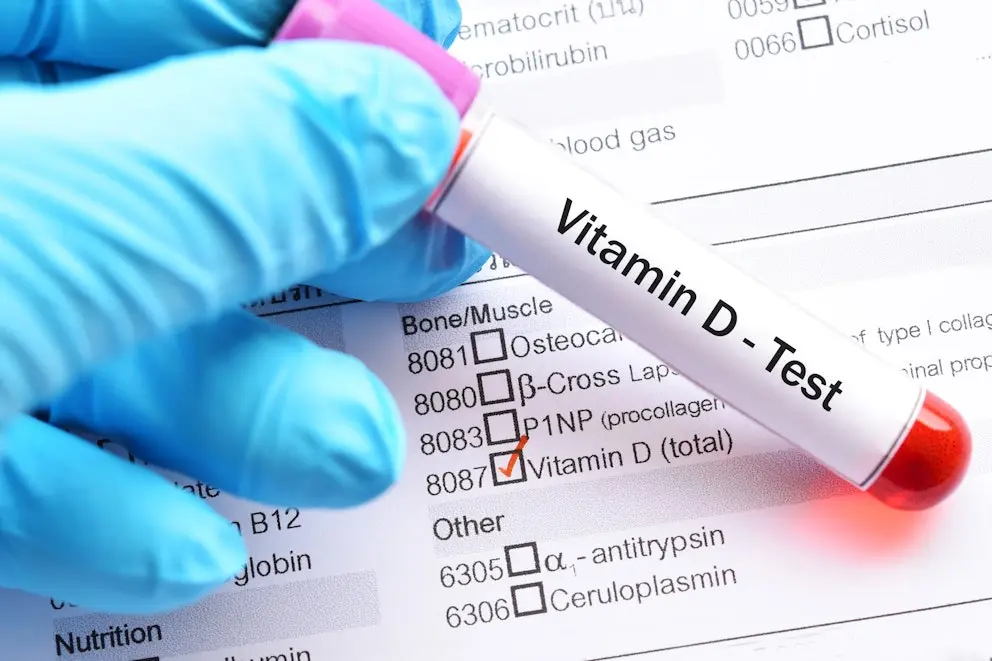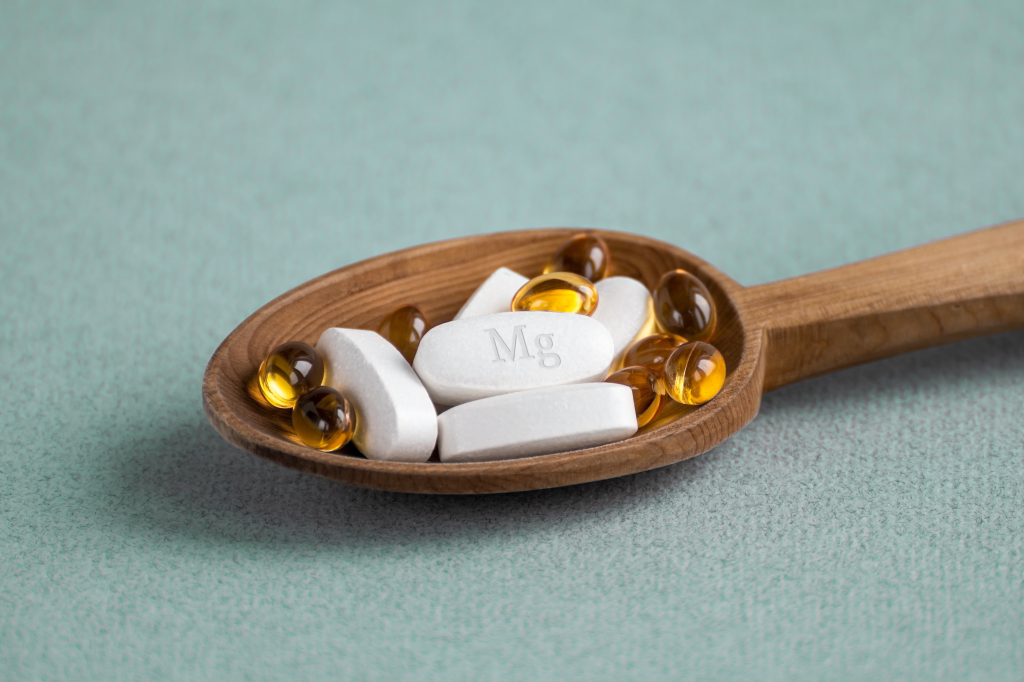At a glance
Vitamin D3 is the natural form that the skin produces from sunlight. How much vitamin D3 you should take depends on biological and environmental factors. Sunlight, organ meats, and eggs are safe sources of vitamin D3, avoiding the risk of toxicity. Taking vitamin D3 with co-helper nutrients enhances absorption and effectiveness.
How much vitamin D3 should I take? The ideal vitamin D dosage varies depending on age, lifestyle, sun exposure, and individual health status.
Vitamin D3 plays a crucial role in supporting bone health and immune function, yet many people fail to get sufficient amounts of this essential nutrient.
Let’s take a closer look at the key factors that influence vitamin D3 status and learn how to maintain optimal levels to promote a healthy body.
What is vitamin D3?
Vitamin D3, or cholecalciferol, is a form of vitamin D that the body naturally produces when the skin is exposed to sunlight.
It aids the body in absorbing calcium, which helps maintain healthy bones and teeth, while also contributing to proper muscle function and balanced immune system responses.
While vitamin D is naturally present in only very few foods, such as fatty fish, egg yolks, and liver, many dairy products are fortified with vitamin D3 to help boost intake.
For individuals with low vitamin D levels or those seeking more effective sources, vitamin D supplementation may be recommended.
Vitamin D is available in two primary forms: vitamin D2 and vitamin D3.
Vitamin D2 is mainly sourced from plants, whereas vitamin D3 is naturally synthesized in the skin through exposure to sunlight and is found in a small number of animal products.
Although vitamin D2 and vitamin D3 have similar structures, they differ in how effectively the body absorbs and utilizes them.
A study published in the Qatar Medical Journal examined over 15,000 adults and found that vitamin D3 was significantly more effective at raising blood vitamin D levels over 12 weeks than vitamin D2 supplementation.1
Due to its ability to raise and maintain vitamin D levels more efficiently, vitamin D3 is often the preferred form commonly used in dietary supplements and fortified foods.
Watch the video below to learn how much vitamin D you actually need.
Factors that may affect vitamin D levels
Vitamin D levels in the body are influenced by a variety of personal and environmental factors.
While diet and sun exposure are widely recognized to influence vitamin D levels, there are other less obvious factors that play a significant role.
Factors that can significantly impact vitamin D levels include:
- Age
- Skin tone
- Geographical location
- Physical activity
- Body fat percentage
- Health status
- Sunscreen use
Even after accounting for these factors, there remain large variations in vitamin D requirements to maintain optimal levels, many of which remain unexplained. This can make it challenging to assess an individual’s vitamin D needs accurately.
In fact, research published in Mayo Clinic Proceedings highlights that other variables, such as the duration of low vitamin D levels, the body’s response to vitamin D supplementation, calcium intake, and individual calcium needs, also play a crucial role in vitamin D metabolism.2

How much vitamin D3 should I take?
According to data published by the National Institutes of Health (NIH), the recommended daily amount of vitamin D differs by life stage.3
For adults aged 19 to 70, the suggested daily intake is 600 international units (IU) of vitamin D. For adults over 70, intake recommendations increase to 800 IU per day.
However, some individuals may process vitamin D differently due to genetic variations, which can influence how their bodies maintain vitamin D levels.
In such cases, higher intake amounts, up to 10,000 IU of vitamin D3 per day, might be considered under the guidance of a healthcare professional.
Blood tests to assess vitamin D levels are valuable tools for determining current levels and guiding the appropriate dosage.

Natural sources of vitamin D3
While the body can make vitamin D naturally, certain environmental and lifestyle factors, such as limited sun exposure or spending most time indoors, can affect how much you produce.
Fortunately, there are natural ways to increase vitamin D3 levels that can be incorporated into your daily routine.
Here are four natural sources of vitamin D3.
1. Sunlight
Vitamin D is known as the sunshine vitamin because the body produces it when the skin is exposed to ultraviolet (UV) rays from sunlight, specifically UVB rays.
To support healthy vitamin D3 levels, getting 5 to 30 minutes of sun exposure on most days of the week without sunscreen is ideal.
However, it’s important to avoid overexposure, as too much time in the sun without protection can increase the risk of skin cancer.
Healthcare providers advise using a sunscreen with a minimum sun protection factor (SPF) of 15 when exposed to the sun for more than a few minutes.
2. Cod liver oil
Cod liver oil is an excellent source of vitamin D3, making it especially valuable for individuals living in areas with limited sunlight during certain times of the year.
“One tablespoon of cod liver oil contains around 1300 IU of vitamin D, making it one of the best natural sources,” explains Dr. Berg.
In addition, cod liver oil is also packed with vitamin A and omega-3 fatty acids, which play a vital role in promoting eye health while offering anti-inflammatory benefits.

3. Eggs
Eggs are a convenient way to incorporate dietary vitamin D into your routine.
One large egg contains around 44 IU of vitamin D, as well as other essential nutrients, including protein and choline.
Because egg’s vitamin D content is found primarily in the yolk, it’s essential to consume the whole egg to maximize its benefits.
4. Beef liver
Beef liver, often referred to as nature’s multivitamin, is an excellent source of vitamins A, B12, and D, as well as iron and zinc.
A three-ounce (85-gram) serving of beef liver provides about 42 IU of vitamin D and around 7000 micrograms of vitamin A, making it an exceptionally nutrient-dense food.

How much vitamin D3 is too much?
Too much vitamin D can be harmful, especially when blood levels rise above 375 nmol/L (150 ng/mL).
This condition, known as vitamin D toxicity, can cause symptoms such as pain, nausea, dehydration, muscle weakness, and a loss of appetite.
In severe cases, critically elevated vitamin D levels can result in kidney failure and increase the risk of cardiovascular disease.
To remain within safe limits, adults aged 19 and older, including those who are pregnant or breastfeeding, shouldn’t exceed 4000 IU of vitamin D per day, unless directed otherwise by a healthcare provider.

Testing your vitamin D levels
If you’re concerned about your nutritional status and are wondering if you are getting enough vitamin D, there are several methods to evaluate vitamin D levels.
A simple blood test is the most accurate way to assess your vitamin D status, as it directly reflects the amount of vitamin D circulating in the blood.
Another option is an at-home vitamin D test kit that uses a finger prick to collect a small blood sample for measuring vitamin D levels.
These test kits can offer quick results and are often more affordable than traditional laboratory tests, though they may not provide the same level of accuracy.

Co-helper nutrients to consider
Magnesium and vitamin K2 are essential nutrients to consider when taking vitamin D.
Magnesium is vital for activating vitamin D, as it triggers key enzymes responsible for converting vitamin D into its active form. This is crucial for regulating calcium absorption and immune system regulation, ensuring the body functions optimally.
Without adequate magnesium levels, the body may struggle to metabolize and utilize vitamin D properly.
Vitamin K2 is another critical nutrient to consider, as it helps guide calcium into the bones and away from arteries and soft tissues, which promotes skeletal and cardiovascular health.
Because vitamin D3 is fat-soluble, taking it with a fat-rich meal or medium-chain triglycerides (MCTs) found in coconut oil can improve absorption and overall effectiveness. Pairing it with the best calcium sources may also support stronger bones and better nutrient synergy.
Key takeaways
- The general recommended dietary allowance for adults ranges from 600 to 800 IU per day.
- How much vitamin D3 you should take depends on genetic variations and individual health needs, which may necessitate higher amounts to maintain optimal vitamin D levels.
- You can measure your vitamin D levels with a blood test.
- Taking vitamin D3 with other key nutrients, such as magnesium and vitamin K, can maximize its benefits and absorption.
FAQ
1. How much vitamin D3 should I take?
The suggested daily intake for adults is 600 to 800 international units (IU) per day. However, certain individuals may require higher doses to maintain optimal vitamin D levels.
2. What’s better: Vitamin D2 or D3?
Vitamin D3 is generally considered better than vitamin D2 because it is more effective at raising and maintaining optimal blood levels of vitamin D.
This is due to vitamin D3 being the form naturally produced by the body in response to sunlight, making it more easily absorbed and utilized.
3. What are the symptoms of vitamin D deficiency?
Common symptoms of vitamin D deficiency include tiredness, low energy, mood swings, and trouble concentrating.
4. How much vitamin D is too much?
When blood levels exceed 375 nmol/L (150 ng/mL), vitamin D toxicity, or hypervitaminosis D, can occur. This condition can lead to symptoms such as nausea, weakness, dehydration, and kidney problems.
It’s important to monitor intake and consult a healthcare provider before taking high doses of vitamin D.
5. What should I take with vitamin D?
To enhance vitamin D absorption, it’s best to take it with a meal that contains healthy fats, such as those found in avocados, olive oil, or nuts.
In addition, pairing vitamin D with magnesium and vitamin K2 is recommended, as this helps optimize its absorption, metabolism, and effectiveness.
Sources
- https://pmc.ncbi.nlm.nih.gov/articles/PMC9372493/ ?
- https://pmc.ncbi.nlm.nih.gov/articles/PMC3012634/ ?
- https://ods.od.nih.gov/factsheets/VitaminD-Consumer/ ?


















